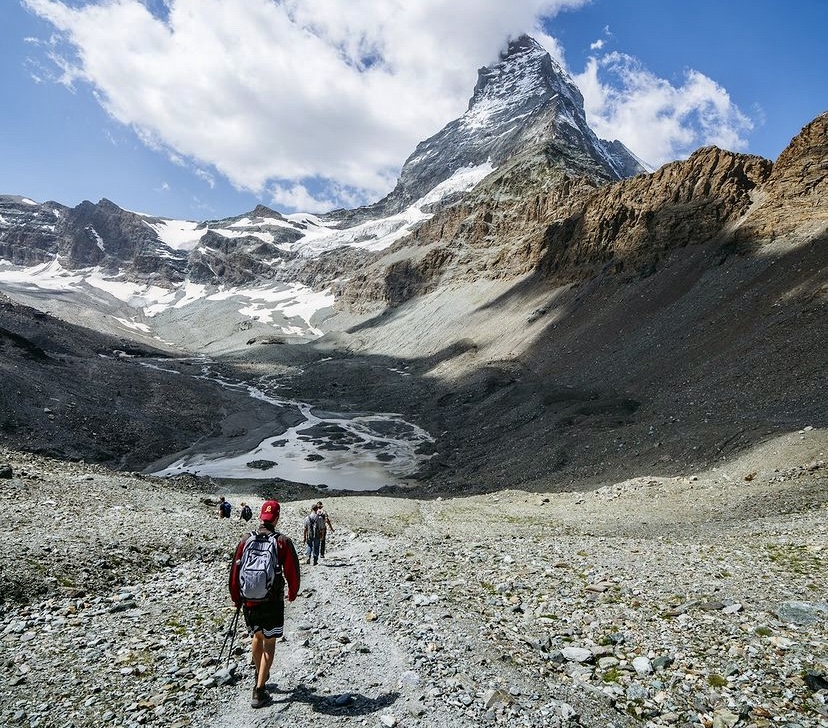Parts of the 744km-long Swiss-Italian border have always followed the lines that nature has drawn. Now, climate change has redrawn those lines, forcing both governments to redefine those shared sections that depend on the boundaries of glaciers. As these boundaries change, the border must also.
“Significant sections of the border are defined by the watershed or the ridgelines of glaciers, firn, or perpetual snow,” the Swiss government said recently. “These formations are changing due to the melting of glaciers.”
Both countries are currently considering the proposed revisions. An agreement is expected soon.

Redefining Alpine borders. Illustration: The Guardian/Euroactiv
Affected areas
Part of the affected area lies below the Matterhorn, close to popular ski resorts. There, the border rejigging will affect the Plateau Rosa Glacier, the Carrel Refuge, Gobba di Rollin, Testa Grigia, and the Zermatt ski resort, where thousands of hikers and skiers cross freely between the two countries every year.
According to Euronews, border adjustments are frequent and generally settled by comparing surveyor data from both countries without getting politicians involved.
It’s no secret that summers are getting hotter, and there is less snow. Swiss glaciers are shrinking so fast that it is unlikely they can be saved. Between 2021 and 2023, eastern and southern Switzerland lost 10% of its glaciers, losing as much ice as it did between 1960 and 1990.
Italy’s glaciers are equally afflicted. Dosdè in the Italian Alps has retreated by seven meters since last year.

Dosdè Glacier in the Italian Alps. Upper image: The Dosdè glaciers in 1932. Lower image: The Dosde glaciers in 2007. Photo: CGI’s Inventory/G. Diolaiuti via Researchgate.net
Grim discoveries
The disappearance of glaciers has also caused the bodies of several long-dead mountaineers to surface. Even a plane that crashed in 1968 and was buried has now emerged from the Aletsch Glacier, according to the BBC.
Some veteran hikers, including Duncan Porter below, have shared their photos of glaciers on social media then and now.

Photo: Duncan Porter/X
Apart from melting glaciers, several climbing routes have suffered massive rockfalls. Some routes have entirely disappeared.






